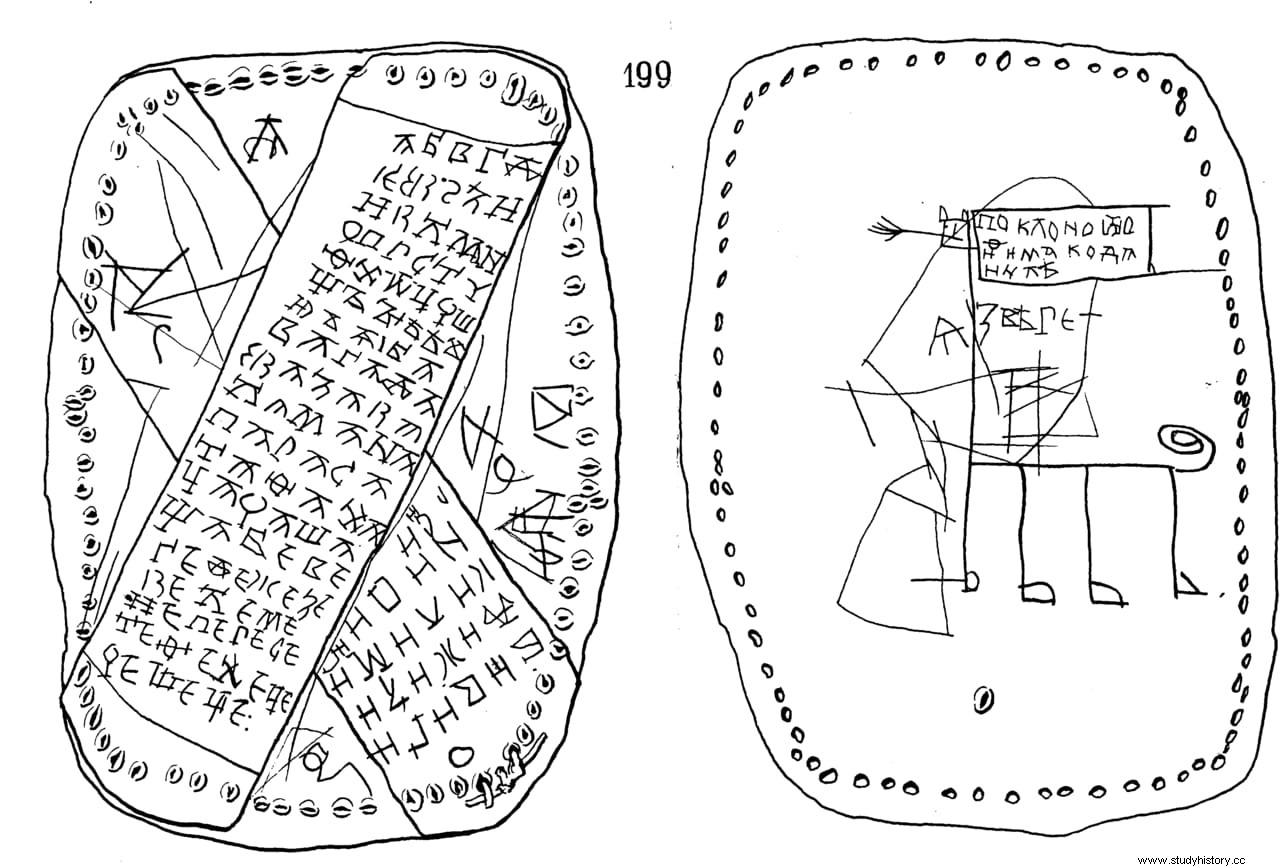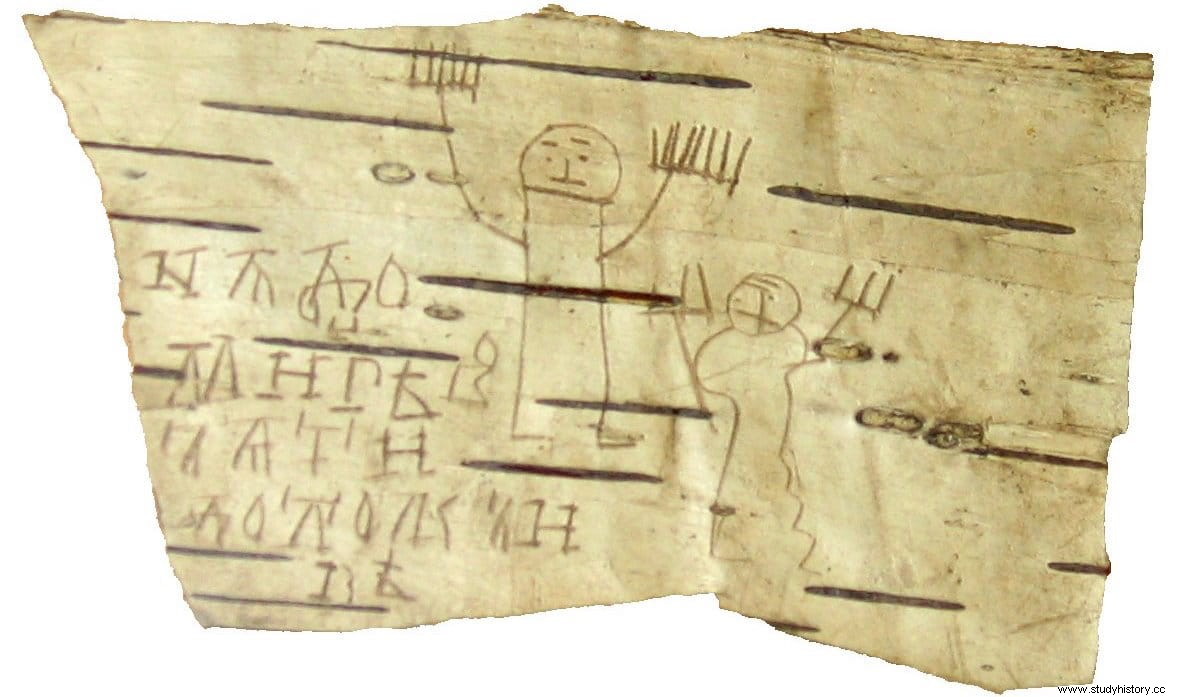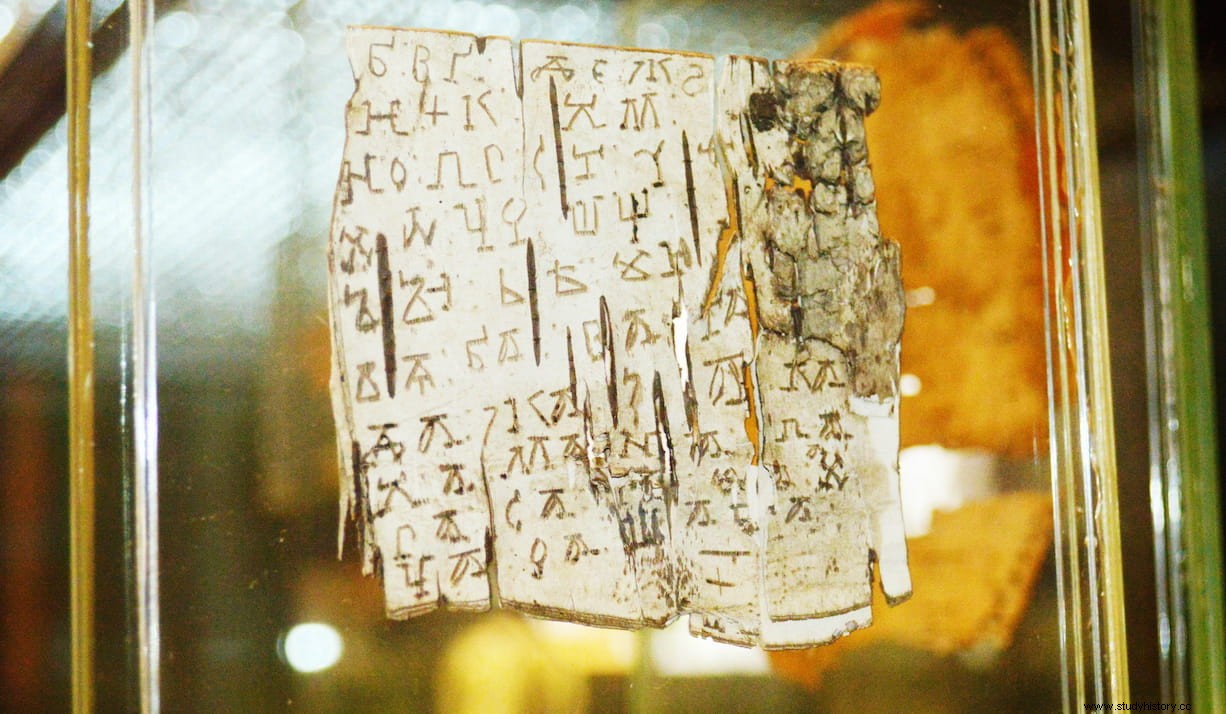The current city of Velikiy Novgorod, located about 190 kilometers southeast of Saint Petersburg, was during the Middle Ages the capital of the principality and later the republic of Novgorod, and is considered the origin of present-day Russia. Between July 13 and 14, 1956, archaeologists found a unique treasure in Novgorod, 17 pieces of birch bark engraved with writing and drawings.
Since July 1951, when the first discovery was made, numerous similar pieces have been found, which today number in the thousands. They are called beresty which precisely means birch , and contain some of the earliest evidence of the Old Russian language.
The entire environment of Novgorod consists of birch forests, and that is why its bark was used during the Middle Ages as a writing support, due to the scarcity of other material. Later, the clay soil protected the barks from moisture, contributing to their conservation to the present day.

But the 17 pieces found in 1956 were special. Twelve of them had illustrations and another five only text. Clearly the drawings were the work of a child. One represents a knight on horseback and with a lance, another a fantastic animal with a large neck, pointed ears and curly tail (accompanied by the text I am a wild beast ). Others seem to be self-portraits of the author or his friends, children playing around a tree, and even one seems to have drawn his parents.
The texts all correspond to repeated syllables and letters of the alphabet, as well as phrases taken mainly from the biblical book of Psalms. The author's name appears on two of the pieces. One of them reads A bow from Onfim to Danilo , and in another simply On(f) .

Investigators concluded that these were the drawings and schoolwork of a 6-7 year old boy named Onfim, who had lived in Novgorod in the 13th century.
In them, Onfim practiced writing the alphabet and repeated the sentences dictated by his teacher, entertaining himself at the same time with fantastic drawings about the things he saw or imagined.
Curiously, in Onfim's drawings, the number of fingers of the portrayed characters varies between 3 and 8, which could be an indication that he still had difficulties with mathematics, or had not yet learned to count. In any case, these are some of the oldest known children's drawings.

The dating of Onfim's birch pieces places them between 1234 and 1268, and all but one of them were found together, indicating that he lost or disposed of them at the same time.
According to the experts, these were exercises indicated for learning to read and write. Thus, in one of the pieces Onfim writes the traditional formula to begin a letter, while another contains a prayer formula that could serve as a signature:Lord, help your servant Onfim .

Both the writings of Onfim and the others found in Novgorod are a sample of the degree of literacy of the population of the area in medieval times.
The greatest interest lies in the fact that they are not religious or political writings, but rather personal messages, promissory notes, love letters, shopping lists, etc.
In the place where the first birch bark of Onfim was found, a bronze monument, created by sculptor Sergei Gaev, was erected on August 23, 2019, depicting the boy at the time of writing in the piece.
